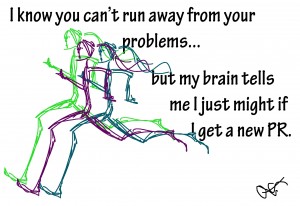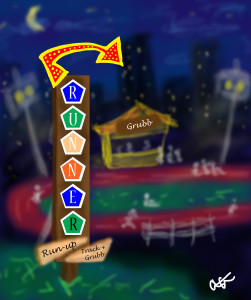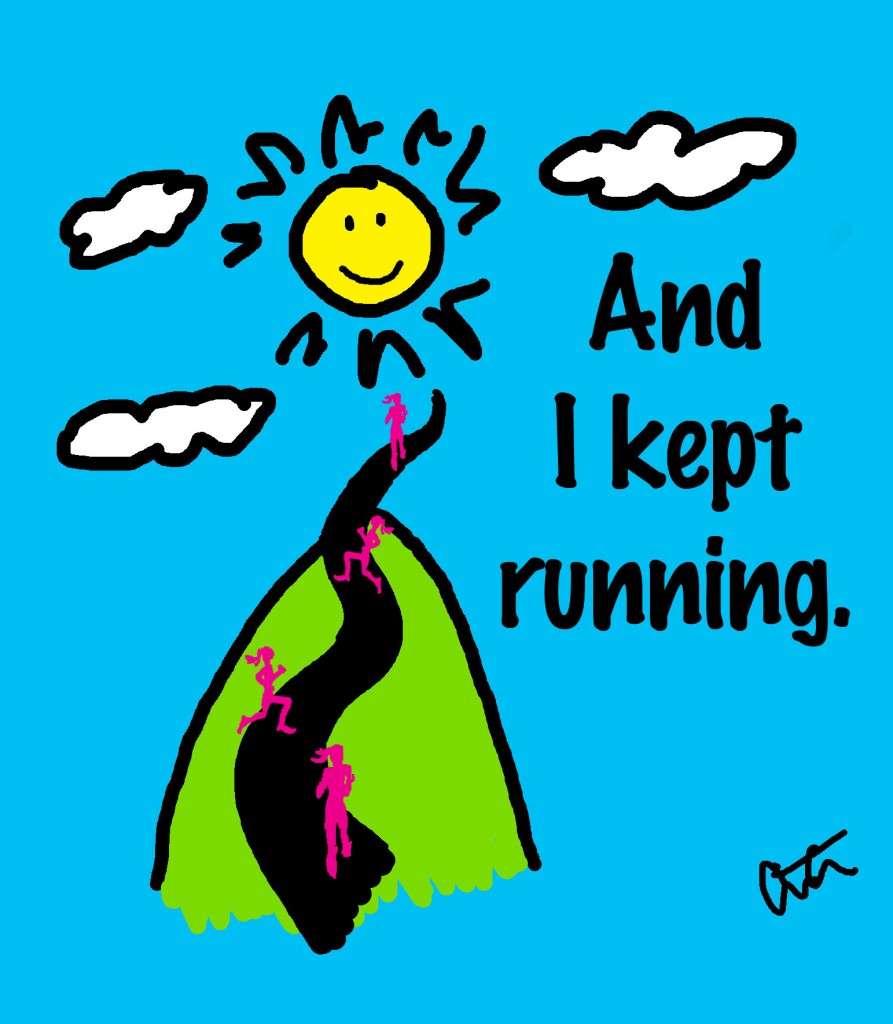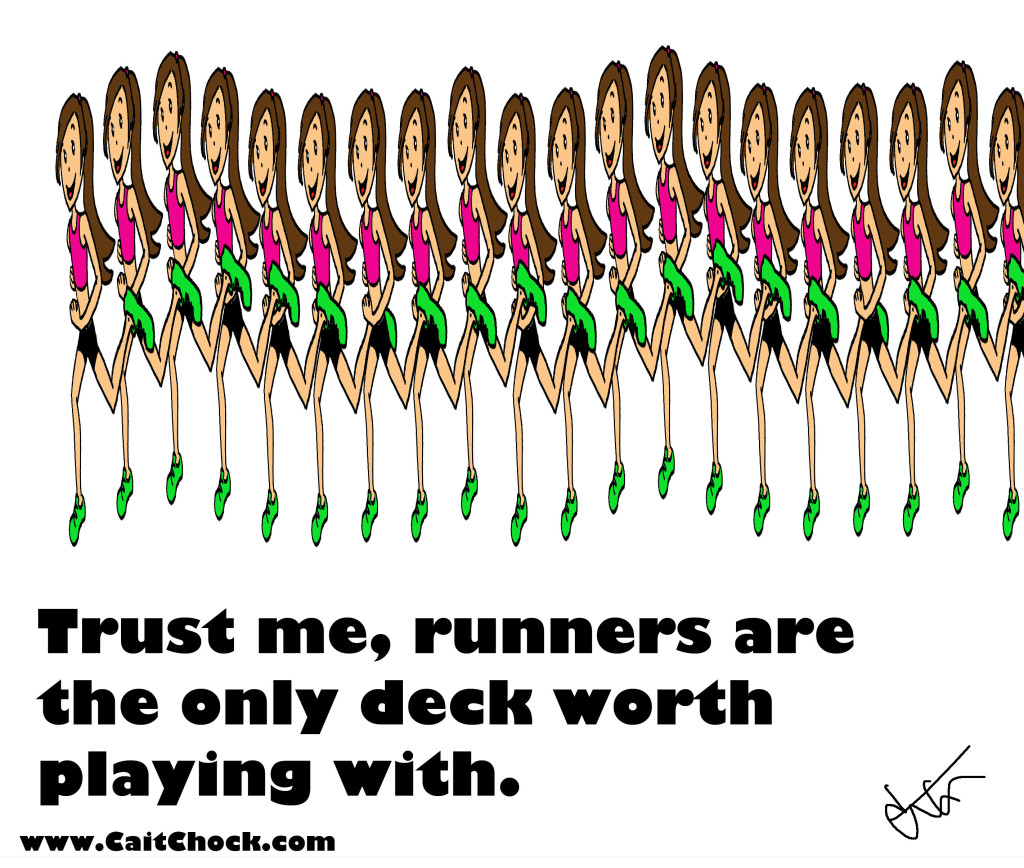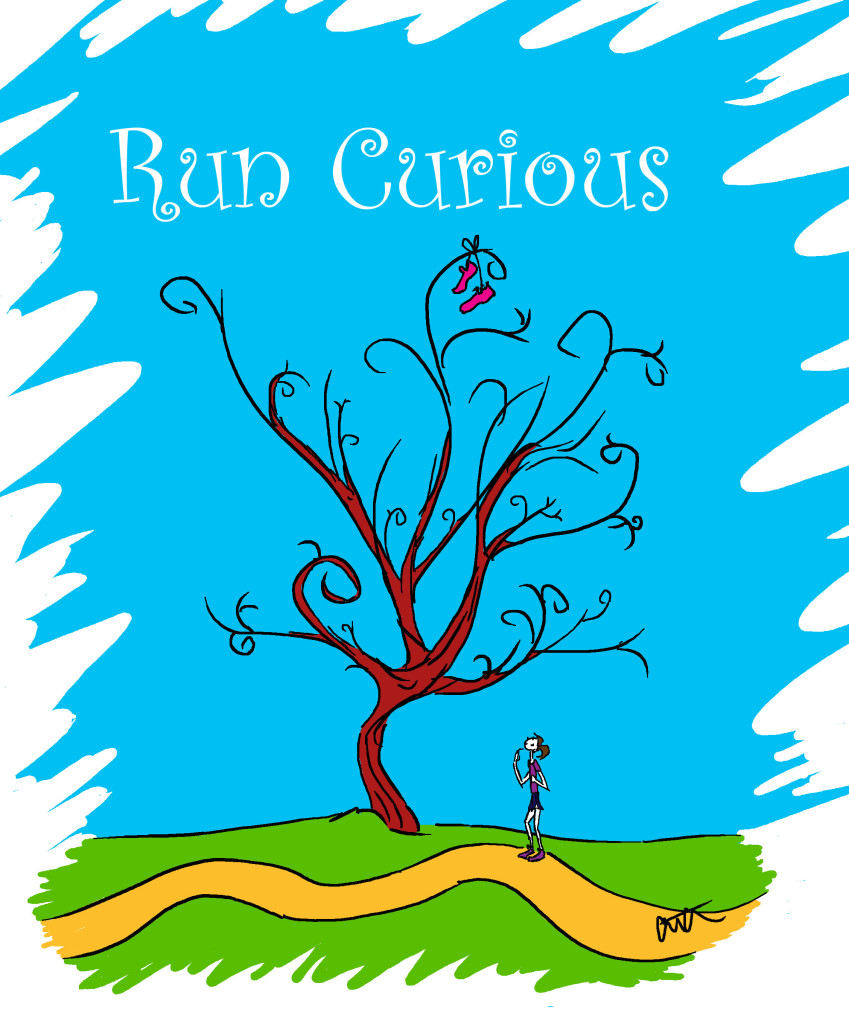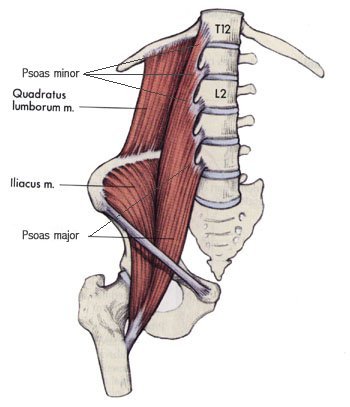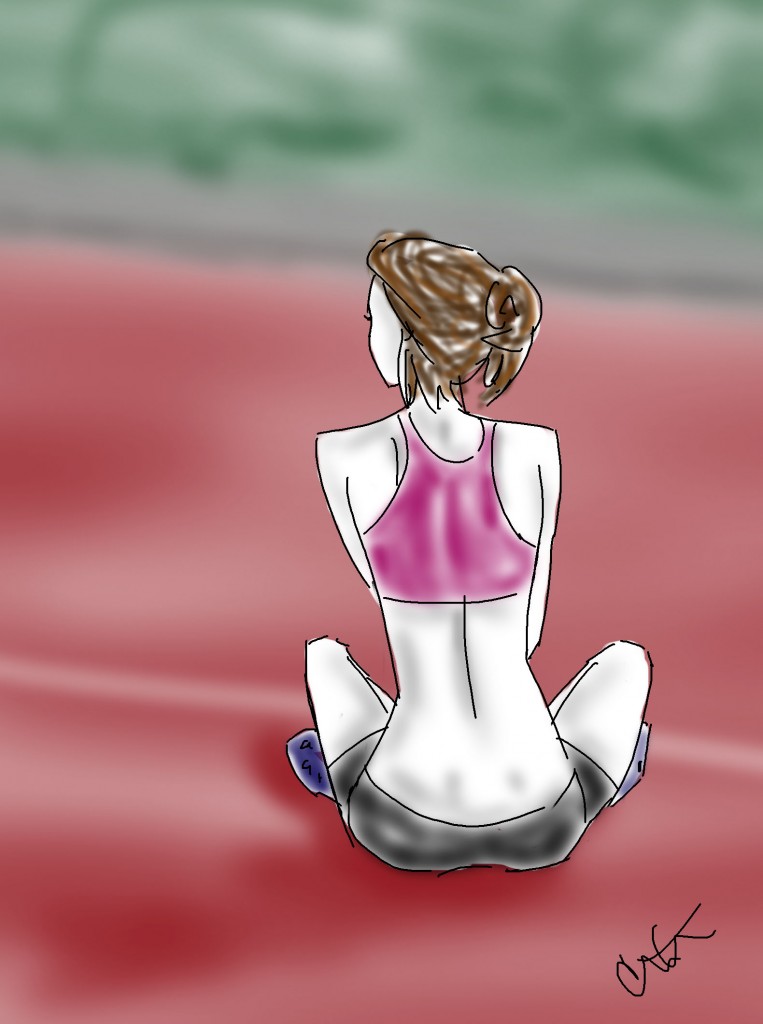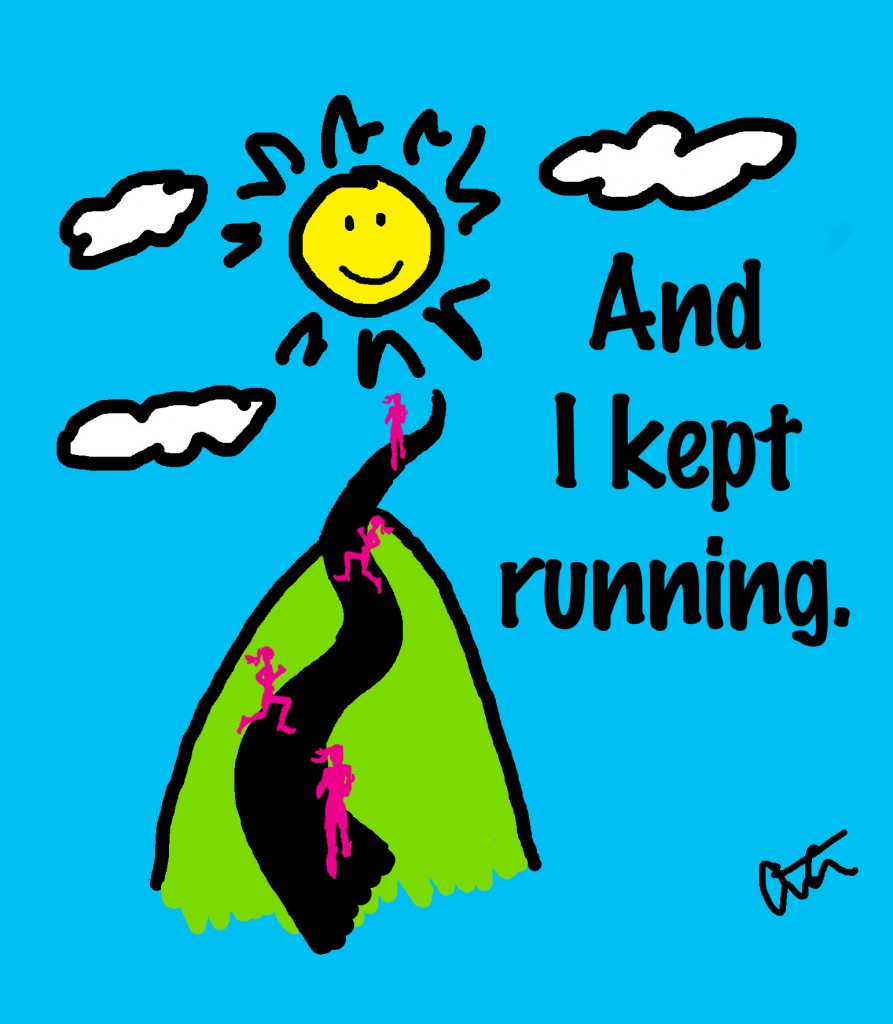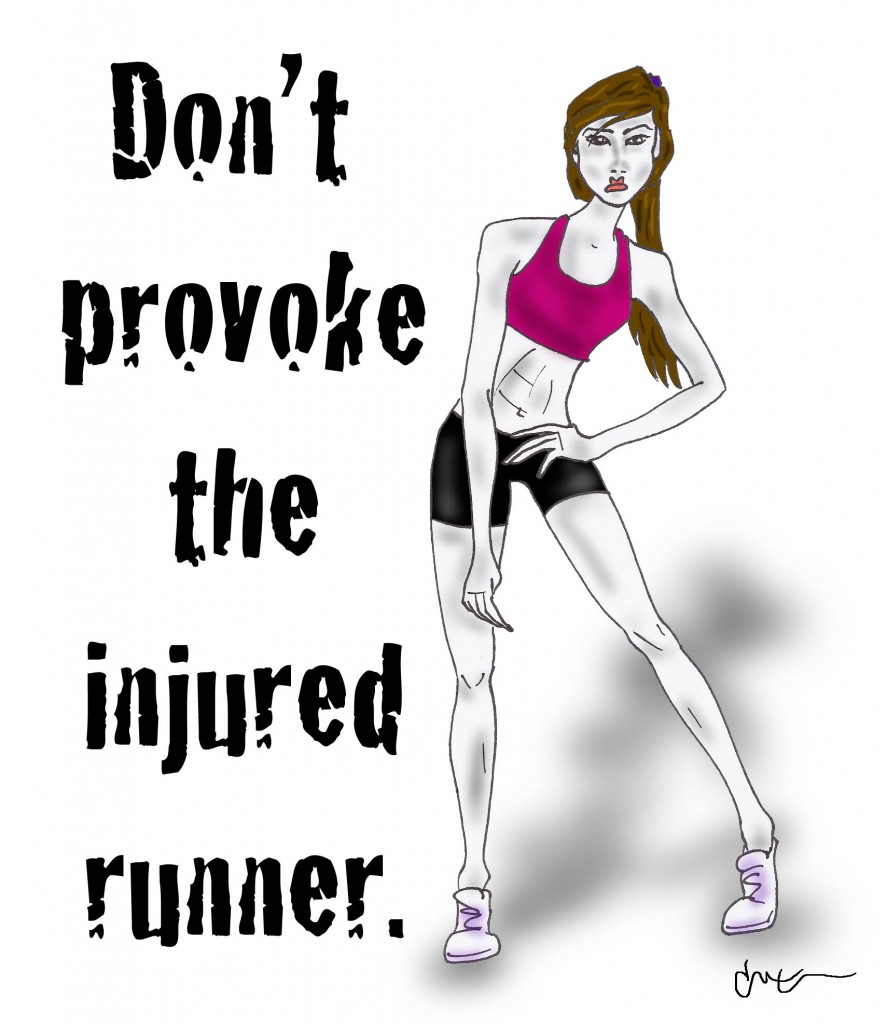I always love getting mail from readers and I often get questions which, because I could talk/write/draw about running all day, I’m always happy to answer. The other awesome thing about bloggy-land and our cyber-culture is constantly making new friends. I enjoy hearing updates back from the runners I’ve ‘met’ after they’ve sent questions and it’s always cool to watch them go on to run healthy and set new PR’s.

Well because great minds think alike, or at least I’m certain questions I’m emailed are ones others probably have, I decided to share a few. If you’ve got a questions feel free to email me at: cait@caitchock.com
Without further adieu:
Q: Hi! Do you do your calf strengthening exercises before or after running or on days off? Just curious… I am 45 and returning after a 2 month hiatus. After a 14 day streak (7 @ 20 min and the 7 @ 30 min, my calfs are starting to get cranky)
Do you think everyday is good for us over 40 runners or should I be taking days off?
Thank you so much. Your pages are very helpful?
~ Dan in Portland, OR
A: Hi Dan! Thanks so much for your readership! First off, CONGRATS on finally getting back to running!!
As for your questions: I’d suggest doing the strengthening exercises every other day, but do lots of stretching every day. Always post-run on both of those, for the stretches do the standing wall stretch both standing with your leg straight and and then with a slight bend in the knee, that will work both calf muscles. Also do one with a heel drop, so stand on a stair and just let your heel drop, slowly working deep into that achilles stretch.
As for your running, every single person is different, so it’s a matter of figuring out your running ‘sweet spot’. For now, with being cautious for your cranky calfs, tailor back to 4-5 days and you can totally do some cross training that doesn’t bother it. Then as the calfs calm down, gradually try increasing total time running, be that either running longer OR with added days running. Aim for only increasing 10% total miles each week, then let those calfs be your guide.
Finally, don’t overlook that the body is a whole unit, so be sure to check out if you’ve got other imbalances that could be setting you up for calf pain, and stretch the whole body. Check your biomechanics and you might need some insoles for added support. Also, make sure you’re running in the right shoes and they’re not ‘dead’…you’d be surprised how ‘easy’ things like needing to replace your shoes can totally clear up your symptoms!
Hope that helps, sorry for the novel reply, and say HI to Portland for me…miss that awesome city!
Happy Running!!
Cait
—-
Related Reads:
The Imbalanced Runner: Pinpoint your weaknesses and avoid injuries
The Low Mileage Runner: How to maximize your performance off of low volume
3 Ways Running Can Fly By and 500 Reasons to Update Your Running Shoes


